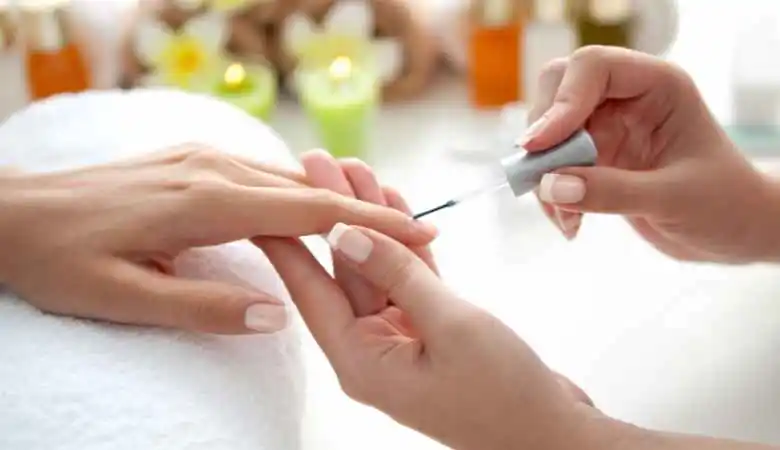A combined manicure allows you to individually select techniques for caring for your nails and hands. Together with experts, we understand the pros and cons of these procedures.
What is needed for a combined manicure, which one to do and what current designs to choose in 2024 – answers to all questions in this material.
What is a combined manicure?
A combined manicure is one of the nail care options that combine two or more techniques – for example, hardware and trim manicure, perhaps adding a spa massage. Specific types of procedures are selected based on individual characteristics; the specialist takes into account skin sensitivity and cuticle density.
A combined manicure allows you to achieve a long-term effect. Hardware techniques do not remove the cuticle, and after a few days hangnails may appear. By combining various procedures, you can achieve “ideal” nails with or without coating, and the cuticle does not have to be cut. Often, a cutter and files are used for this, which is safer.
It is better to entrust a combined manicure to a professional master who uses a high-quality device with a power of at least 35 W and understands the peculiarities of nails. The procedure takes longer than a standard European manicure and costs more, but the results last a long time.
What techniques can be combined in a combined manicure?
Several different techniques are suitable for a combined manicure. To choose the optimal combination, you should discuss your wishes and the features of your nails with your nail technician.
Classic edged manicure
A traditional method of nail care in which the skin is first softened in water and then processed by hand using clippers. This is a rather traumatic method, which may leave small cuts. In addition, trimmed cuticles grow quickly, so specialists do not often use classic trimmed manicures.
Unedged manicure
The cuticle can be removed in a gentle way using a special remover and wooden manicure sticks. In this case, the burrs are not removed, but trauma is also minimized. It is also important to make sure in advance that the cuticle remover does not cause an individual allergic reaction.
Hardware manicure
Treating nails with cutters is a quick and convenient way. However, you need to know how to handle the device and select attachments. With their help, you can not only treat the skin around the nails but also polish the nail plate to a shine. It is better not to experiment without experience, especially on sensitive and brittle nails.
Brazilian manicure
A skincare technique in which hands are first dipped in an oil bath, then cream is applied, and gloves are put on. After about half an hour, the nails are processed, pushing back the softened cuticle. This is followed by standard hand shaping and buffing.
Japanese manicure
Therapeutic manicure for those who value naturalness. Its main task is to restore the nail plate. To do this, apply a special serum to cleaned nails and then rub in a paste to fill microcracks. The cuticle, as in previous techniques, is manually pushed back with an orange stick, and mineral powder is used for polishing.
Before going for a manicure, you should consider medical factors and individual contraindications.
Among the skin diseases that are characterized by localization in the area of the hands and can impose restrictions on manicures:
- Psoriasis
- Atopic dermatitis
- Eczema
In the acute stage of these diseases, manicures should be limited at least until the skin processes go away.
Mycosis is another infectious disease of the skin and nails, which is manifested by redness, peeling, the formation of so-called onychodystrophies (dystrophy of the nail plate), onycholysis (detachment of the nail plate from the nail bed). With this disease, it is better to refrain from manicure.
Suppose you have any skin disease in the area of the hands. In that case, you need to see a dermatologist to establish a diagnosis, treat the acute stage and after that go for a manicure.”
Benefits of a combined manicure
A combined manicure is considered optimal because it allows you to select exactly the techniques that the client needs. Main advantages:
- The skin remains smooth and well-groomed for a long time;
- The nail plate is ready for any coating, from washable to gel polish ;
- Minimized risks of cuts on dry and sensitive skin;
- Restorative hand skin care.
The classic way to treat the cuticle is a trimmed manicure; it does not take much time, on average 20–30 minutes: “It is better to finish a trimmed manicure with careful polishing. And this is a combined manicure, which includes two techniques.
Edged manicure + file manicure or edged manicure + hardware. In general, the entire procedure without additional care or coverage usually takes no more than 30-40 minutes.”
Disadvantages of combined manicure
The potential disadvantages of a combination manicure depend on the techniques that are combined in it. Typically, experts note the following shortcomings:
Injuries during the trimming procedure
Complexity of the techniques – not every master has all the necessary skills;
To do a combined manicure yourself at home, you will have to purchase the necessary accessories and a manicure apparatus, the cost is slightly higher compared to a classic manicure of the same type.


